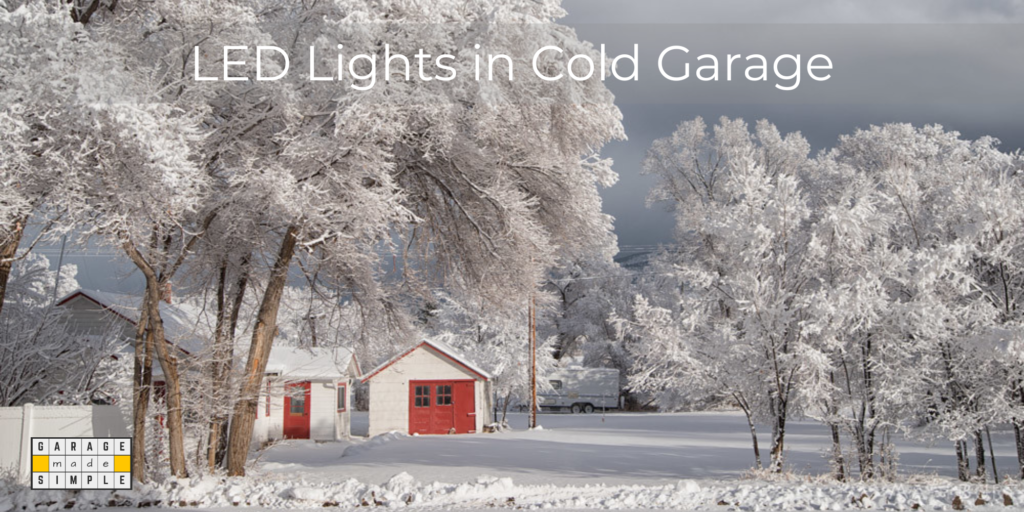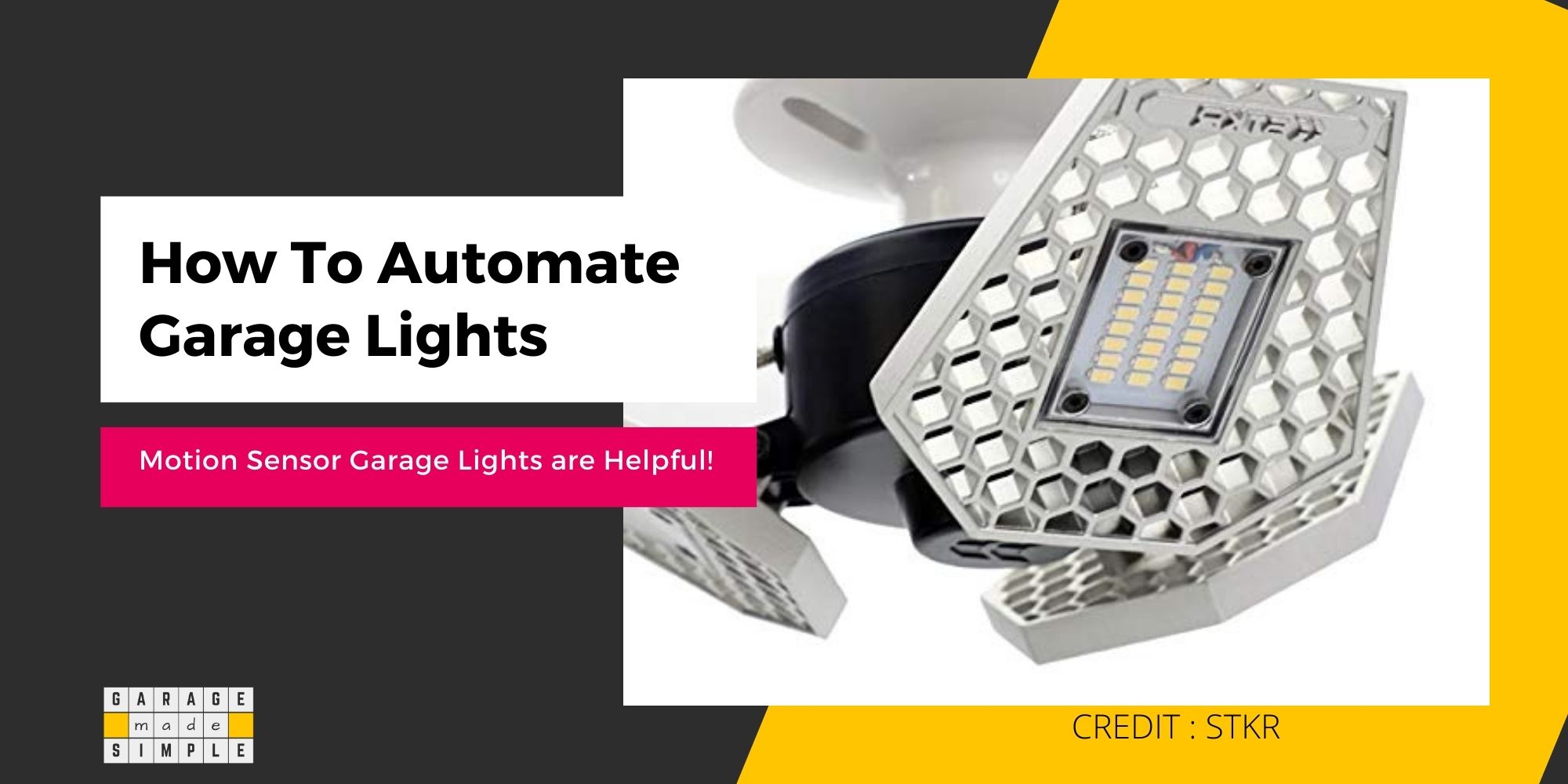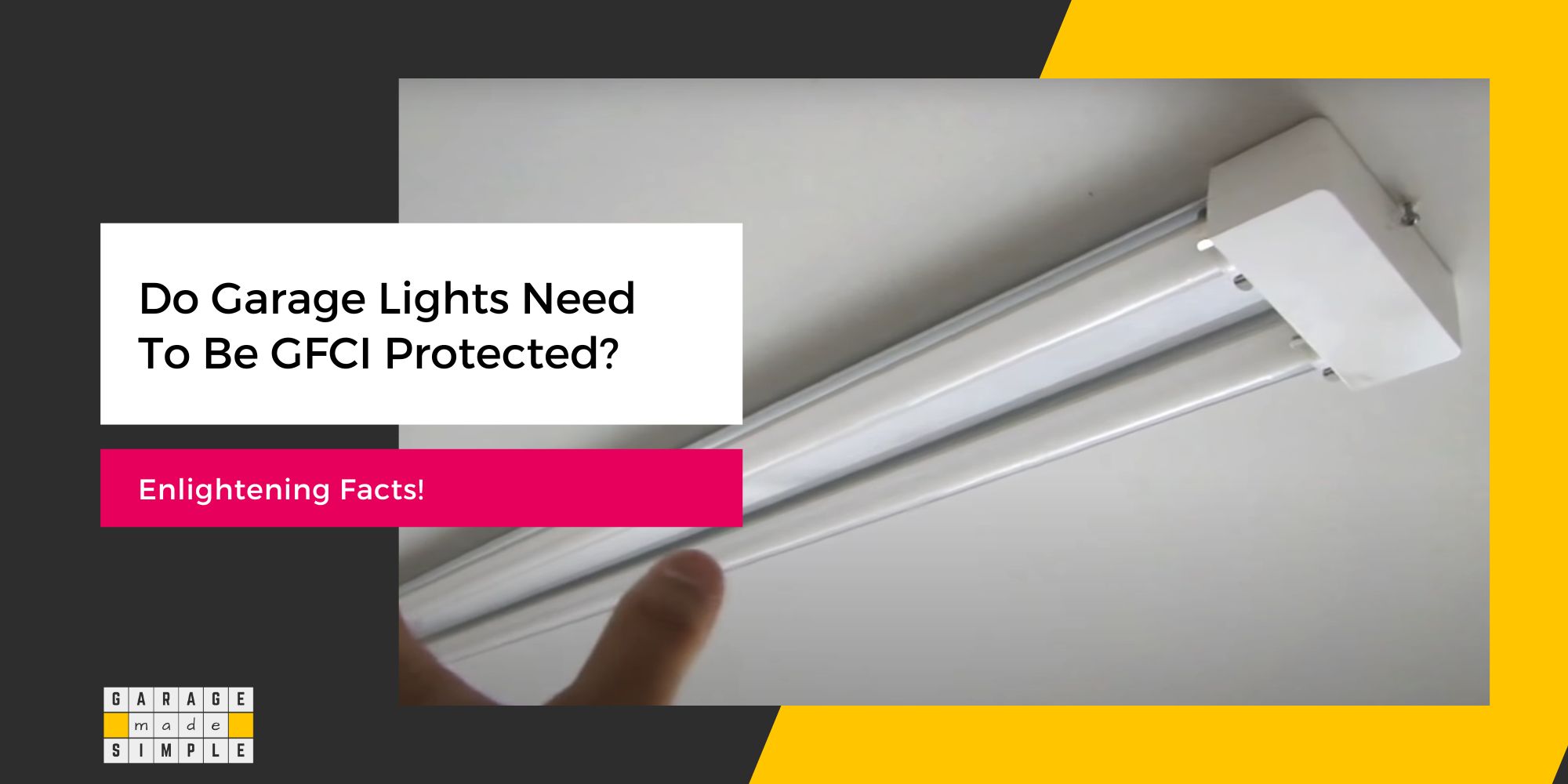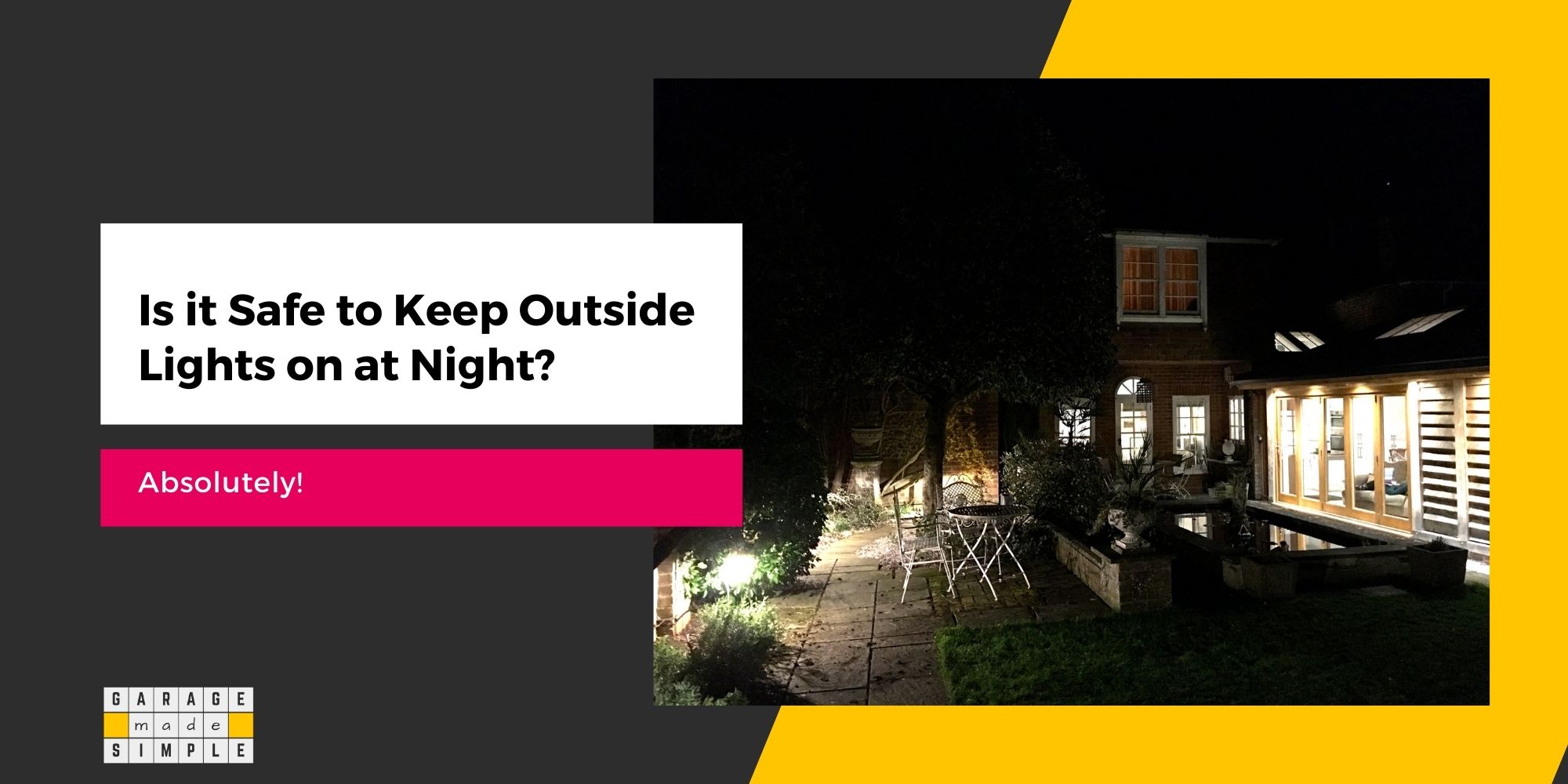LED Lights in Cold Garage: The Best Option in 2024!
garagemadesimple.com is a participant in the Amazon Services LLC Associates Program, an affiliate advertising program designed to provide a means for sites to earn advertising fees by advertising and linking to Amazon.com . The website is also an affiliate of a few other brands.
It is not uncommon to have a detached (sometimes even an attached) garage to be unheated and uninsulated. Now, can you put LED lights in cold garage? Will they even work when the temperatures go below freezing?
Say goodbye to flickering frustrations and embrace the future of cold-weather lighting. LED lights in cold garage are your solution!
In this article I answer all your concerns regarding LED lights in cold garage.

Do LED Lights Work in a Cold Garage?
Yes, LED lights work great in cold garages! In fact, they often perform better in cold temperatures than traditional incandescent or fluorescent bulbs. Here’s why:
- LEDs are more efficient in cold weather. Unlike traditional bulbs, which lose some of their efficiency as the temperature drops, LEDs actually become more efficient in cold weather. This means they produce more light while using less energy.
- LEDs don’t have filaments that can break in the cold. Incandescent bulbs have thin filaments that can break if the temperature gets too cold. This is not a problem with LEDs, which use solid-state technology.
- LEDs start up quickly in cold weather. Traditional bulbs can take a few seconds to reach full brightness in cold weather. LEDs, on the other hand, turn on instantly, regardless of the temperature.
So, if you’re looking for a reliable and efficient way to light your cold garage, LED lights are a great option. Just be sure to choose LEDs that are rated for cold weather conditions.
LEDs (Light Emitting Diodes) perform better at lower temperatures due to their inherent semiconductor nature and distinct operational characteristics. Here’s a brief scientific explanation:
Why Do LEDs Perform Better at Lower Temperatures?
LEDs perform better, than other light sources, at lower temperatures based on the technology and science behind their construction and method of producing light from electricity. Specific reasons are as under:
Efficiency of Semiconductor Materials:
- LEDs are semiconductor devices that emit light when electrons recombine with electron holes in the semiconductor material.
- At lower temperatures, the semiconductor materials in LEDs generally exhibit better electrical conductivity and efficiency in the recombination process, leading to more effective light emission.
Temperature-Dependent Band Gap:
- The performance of semiconductor materials is influenced by the band gap, which is the energy difference between the valence and conduction bands.
- Lower temperatures result in a narrower band gap, allowing electrons to move more freely across the semiconductor material. This facilitates better electron-hole recombination and light emission in LEDs.
Reduced Thermal Losses:
- LEDs are extremely efficient in converting electrical energy into light compared to traditional bulbs because they generate less heat. There is very little energy loss due to heat.
- At lower temperatures, the reduced thermal losses mean that more of the electrical energy is converted into light, resulting in improved overall efficiency.
Solid-State Technology:
- Unlike incandescent bulbs that rely on a heated filament, LEDs use solid-state technology where light is produced by electroluminescence in a semiconductor material.
- The absence of a fragile filament makes LEDs more robust and less susceptible to damage from temperature-related stresses, contributing to their reliability in colder environments.
In summary, the superior performance of LEDs at lower temperatures can be attributed to the optimized efficiency of semiconductor materials, the temperature-dependent band gap, reduced thermal losses, and the robustness of their solid-state technology.
Advantages of Installing LED Lights in Cold Garage
LEDs are superior to traditional light sources on almost every parameter. Installing LED Lights in Cold Garage is a far better idea than installing traditional light bulbs in a cold garage.
Here’s why:
Extended Lifespan
Unlike incandescent bulbs that dim and degrade in the cold, LEDs flourish. Cooler temperatures actually enhance their performance, leading to longer lifespans. This makes them perfect for outdoor spaces or unheated garages that face harsh winters.
Instant Brilliance
No more fumbling in the dark! LEDs bypass the warm-up time of traditional bulbs, providing immediate illumination even in freezing conditions. This is crucial for safety and convenience, especially outdoors.
Energy Efficiency
LEDs reign supreme in energy efficiency. They convert over 85% of their energy into light, compared to a mere 15% for incandescent lights. This translates to significant cost savings, especially in cold weather when traditional bulbs require more energy to reach the same brightness.
Built for the Elements
Forget fragile glass bulbs! LEDs are constructed with durable plastic, making them resistant to shock and sudden temperature changes. They’re ideal for outdoor applications exposed to wind, snow, and even hail.
Optimal Operating Range
LEDs work just fine in temperatures ranging from a frosty 20°F to C to 140°F. In essence LED lights can brave the hottest summers and sub-zero winters. Of course it would be nice if you show some TLC to the LED bulbs and insulate your garage.
For example, Sunco LED Workshop Garage White Shop Light are just perfect for a garage workshop.
Sunco LED Workshop Garage White Shop Light
Sunco LED Workshop Garage White Shop Light
- No wiring required. Just plug into an existing plug point.
- Interlink up to 4 Shop Lights.
- Can be Flush Mounted on the garage ceiling as well or hung using hooks & chains.
- Has 1100 Beam Angle, 4000 Lumens and 50,000 Hour Lifespan.
Precautions to Take When Installing LED Lights in Cold Garage
Buy the Correct Specs
Not all LEDs are equal; choose the right ones for cold weather. Seek out “cold-weather” or “low-temperature” LEDs for reliable brilliance in freezing conditions. They are especially designed and manufactured to keep working even in really cold weather!
Shield Them From Drafts
Position the LED lights such that they are protected from strong winds and heavy rain and snow for optimal efficiency and consistent brightness.
Sturdy Fixtures
Invest in specialized fixtures or enclosures designed for cold protection, so that the impact of adverse weather conditions on the LED lights is minimized.
Do LEDs flicker in cold weather?
While LEDs are generally reliable, flickering may occur in lower-quality products. Invest in high-quality LEDs designed for various temperature ranges to ensure consistent, long-lasting performance.
LEDs vs. CFLs in cold weather: How do they fare?
LEDs outperform CFLs in cold weather, offering higher efficiency, reliability, and instant light. Choose LEDs for consistent lighting, especially outdoors.
What are the additional benefits of using LEDs in cold weather?
Enjoy extended lifespan, low maintenance, high efficiency, brighter lighting, and eco-friendly benefits with LEDs in cold weather.
Key Takeaways
- Invest in high-quality LEDs for reliable performance in all temperatures.
- LEDs outperform CFLs in cold weather, offering better efficiency, reliability, and instant light.
- Enjoy extended lifespan, lower maintenance costs, and brighter lighting with LEDs.
- LEDs are the eco-friendly choice for cold-weather illumination.
For more information on types of garage lights, check out my earlier blog, 14 Types of Garage Lights – A Quick Helpful Guide for 2024
Thank you very much for reading the post. I do hope you found it informative and useful.







